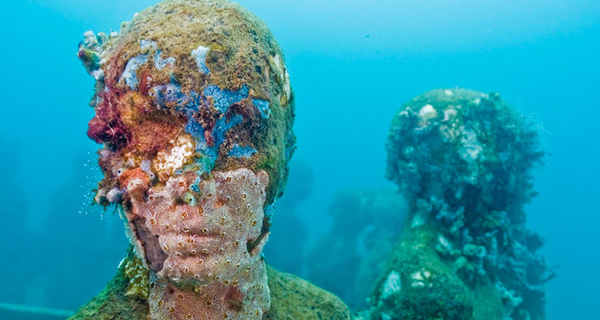Civil organizations warn that the recent protected natural area Biosphere Reserve of the Mexican Caribbean decree left out the main threats the area is currently facing.
The Center for Biological Diversity (CBD) and Greenpeace Mexico say that the initiative, signed by President Enrique Peña Nieto on December 5, did not address problems such as the high concentration of boats, tourists and scuba divers in reef areas.
Nor did it address the construction of coastal infrastructure, the extraction of ornate species, the stranding of boats and the mismanagement of oils and gasoline from recreational crafts.

NGOs criticized that the decree of the new Biosphere protected area of the Mexican Caribbean does not address major threats in the region. (Photo: Cancun Scuba Dive)
The Biosphere Reserve of the Mexican Caribbean is a protected natural area that lies to the northeast of the Yucatan Peninsula and has an area of 5.7 million hectares, of which 98 percent are maritime and 2 percent territorial.
In a statement, the Center for Biological Diversity and Greenpeace contend that omissions in the decree make it urgent for the National Commission on Natural Protected Areas (Conanp) to issue a management program with clear activities regulations in the area, in order to avoid risks to the biodiversity that inhabits this marine environment.
In a review of the reserve decree, these organizations noted that what is prohibited so far is the use of permanent or trawling equipment and permanent fishing gear on the seabed.
However, the decree does not contemplate banning the shrimp fishery in the northwestern area of Isla Contoy, or conducting exploration and exploitation, both mining and hydrocarbons, and extraction of stone material.
“The Caribbean is famous for its biodiversity, which attracts a great tourist demand,” said Alejandro Olivera, the Center for Biological Diversity representative in Mexico.
“This management program is not sufficient, there are other important regulations and activities that must be taken into consideration in the coastal zone, such as the carrying capacity of reefs, and the control of nautical traffic,” he added.
The NGOs also pointed out that the protected area of five million hectares does not consider any technical criteria for infrastructure construction, leaving the coastline unprotected and, in some cases, there are areas of omission against important tourist areas, such as southern Puerto Morelos, Puerto Aventuras and Xel-Ha.
Out of the 181 Natural Protected Areas in Mexico, (including the recent one decreed during the COP13 of the Convention of Biological Diversity (CBD) in Cancun), only 102 have a management program.
Source: http://www.reforma.com/

